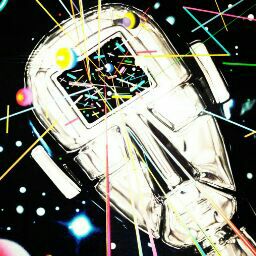Apparently it’s called the crescent nebula because that’s what it looks like through a visual telescope. I think it looks more like a scrotum ¯\_(ツ)_/¯
This is my third time shooting the Crescent Nebula! I had first shot it back in 2017 when I still used a DSLR for astrophotography. I still use the same scope, but eventually upgraded to a monochrome astro cam, and this was my first target using Hydrogen alpha + Oxygen-iii narrowband filters in 2019. Last year I decided to shoot it again, although I combined this data with the data from 2019 since my setup then was identical to how it is now. I did have to heavily crop in on this image due to differing camera rotations, but I ended up with a higher signal to noise ratio overall by combining the data. I also made a starless version of this pic which better shows off the faint nebulosity, including the Soap Bubble Nebula in the bottom left.
Captured over 5 nights in May 2019 (Bortle 7) and 4 nights in May 2022 (Bortle 6)
Places where I host my other images:
-
TPO 6" F/4 Imaging Newtonian
-
Orion Sirius EQ-G
-
ZWO ASI1600MM-Pro
-
Skywatcher Quattro Coma Corrector
-
ZWO EFW 8x1.25"/31mm
-
Astronomik LRGB+CLS Filters- 31mm
-
Astrodon 31mm Ha 5nm, Oiii 3nm, Sii 5nm
-
Agena 50mm Deluxe Straight-Through Guide Scope
-
ZWO ASI-120mc for guiding
-
Moonlite Autofocuser
Acquisition: 26 hours 5 minutes (Camera at Unity Gain, -15°C)
-
Ha - 61x360" + 88x300"
-
Oiii - 54x360" + 87x300"
-
Darks- 30
-
Flats- 30 per filter
Capture Software:
- Captured using N.I.N.A. and PHD2 for guiding and dithering.
PixInsight Processing:
-
BatchPreProcessing
-
SubframeSelector
-
StarAlignment
-
ImageIntegration
-
DrizzleIntegration (2x, Var β=1.5)
-
DynamicCrop
-
DynamicBackgroundExtraction
-
EZ Decon
-
NoiseXTerminator
-
STF applied via HT to bring each image nonlinear
Combining Channels:
really like how the colors turned out on this, especially the slight gold/yellow in the nebula compared to the red in the background
- Pixelmath to make RGB image using ForaxX’s HOO palette:
R= Ha
G= ((Oiii*Ha)^~(Oiii*Ha))*Ha + ((Oiii*Ha)^(Oiii*Ha))*Oiii
B= Oiii
Nonlinear:
-
LRGBCombination with extracted L as luminance, used for chrominance noise reduction
-
Shitloads of CurveTransformations to adjust lightness, saturation, contrast, hues, etc. with various masks
-
NoiseXTerminator
-
More Curves
-
EZ star reduction
-
NoiseGenerator to add noise into reduced star areas
-
Even more curves
-
ColorSaturation to better bring out the Oiii regions
-
More NoiseX
-
Resample to 80%
-
Annotation
hey buddy. nice job.
i don’t follow this sort of thing and your specs look like greek to me. but you have obviously spent a ton of time and effort and are quite accomplished at your craft.
it does look like a scrotum. haha. scrotum.
Bortles!
Great job! Please excuse my ignorance, but what’s that thing in the middle that looks like a hole?
it’s a cloud of dust in the foreground of the nebula blocking some of the light



